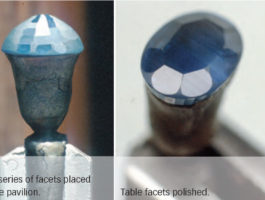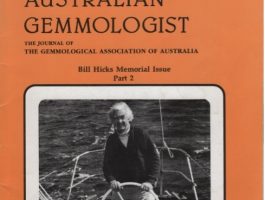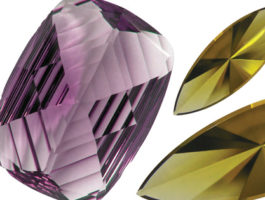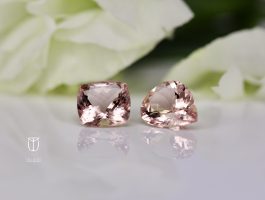AG Article: A Visit to the Indonesian Opal fields in 2019 – Opal Types, Mining and Treatments Part 1
Title: A Visit to the Indonesian Opal fields in 2019 – Opal Types, Mining and Treatments Part 1
Authors: Terrence Coldham, BA(Geol) FGA FGAA & Joel Ivey, BSc (Geol)
Abstract: This is Part 1 of a report that details a visit by two of the authors to the Indonesian opal fields of Banten Province, West Java, Indonesia. This first part provides a detailed description of the various types of opal including rock types and fossiliferous remains associated with opal. Mining methods are described as are processing methods, including an overview of a field demonstration of heating of opal to improve play of colour. The second part of the report to be published in a later issue of The Australian Gemmologist will provide a more detailed discussion of the characteristics and properties of samples of opal studied, including reactions to heating experiments.
Background: During the last half century several articles have been published on the occurrence of opal in Indonesia. (O’Leary and Ball, 1976; Banker 2001; Sun et al. 2009). A comprehensive description of the Indonesian opal fields and their products can be found in an article published in The Australian Gemmologist in 2009 titled “Precious Opal from Java” where detailed information is given on the geology of the district and descriptions of the opal produced at that time (Sun et al. 2009). In this current article the authors will be brief in their description of the deposits, concentrating reporting on recent field observations, and descriptions of specimens observed or collected.

Figure 3. Opalised fossil snail from Indonesia, 12.05carats. Left: apical view, showing spiralled apex and compacted shape,17mm wide. Right: apertural view, showing shallow spire and elliptical aperture, 19mm tall. Photos courtesy of Robert A. Smith. Specimen courtesy of Australian Opal Centre, Lightning Ridge.

Figure. 18. Two views of a piece of “Kalimaya Teh”. Left: in direct lighting; Right: lit from behind with a torch. Photos courtesy of T. Coldham.
Read the full article in the December 2020 Issue of the Australian Gemmologist. Members of the Gemmological Associate receive copies of the journal free of charge – find out more about becoming a member today. Need a copy of the issue? Please contact the Editor.




